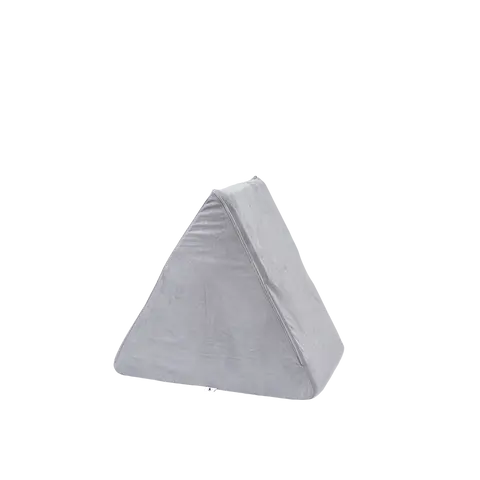Removed by mod
deleted by creator
He said games bro
Wait Minecraft is not real life?
real life is where you install doom, and I’m pretty sure someone has installed doom in minecraft by now
edit: a ha! https://www.gamesradar.com/you-can-now-play-doom-in-minecraft/
This led me to another article, apparently people are using excess CPU power to research Minecraft related phenomenon such as the tallest cactus. When they said the world will end not with a bang but a whimper, this is some of the whimpering.
Minecraft definitely exists in real life. How else would you be able to play it?
Removed by mod
deleted by creator
Out of range for Bless? Fall back to thoughts and prayers.
Thoughts and prayers? I’m thinking about kicking your ass and you better pray I don’t! My healing spells are only to ensure you don’t die before I get my point across!
“I’m playing medic”
“To what end?”
“Immortality.”
No he cannot. I don’t even need to use the theorem to figure that out. He’s already at the maximum range by being 30ft in the air. Unless the party is directly under him, he can’t reach.
Ope. Hang on.
Normally this is obviously correct, but in this case, we have to consider how tall the characters are. As a DM, I would rule that if any part of the character (their actual person, not including, say, the reach of the sword they’re holding) is within the 30’ circle, or could be if they actively collaborated with the cleric using free actions, then the bless would affect them.
There’s also a few definitions we need to talk about:
- if the cleric (we’ll call them Carl) is 30’ in the air, that is understood to mean that if the spell holding them up there fails, they will fall 30’. By the same token, a character 0’ feet in the air can only fall 0’. We can infer that Carl’s feet (or the bottom part of the PC, at any rate) are 30 feet in air.
- we consider Carl to be in the center of the 5x5 grid square in the plane A formed 30’ above the flat terrain.
- the “allies are 20ft away” part is a bit too fuzzy for this to work (how many allies? which ones? they can’t all occupy the same grid square unless they’re tiny), so we’ll have to make some calls here. Let’s just consider one ally, Alice, who is 20’ away.
- We consider Alice to be in the center of her grid square, in the plane T formed by the flat terrain.
- When we say Alice is “20ft away” from Carl, we mean that a perpendicular line drawn through the cleric intersects with T at the center of a grid square in A–we’ll call this square C(T) and Carl’s square at current altitude C(A), and the center of C(T) is 20’ from the center of Alice’s square A(T). Visualized as a battle grid you would have
C ◻◻◻ Ain plane T, with 3 empty squares separating them. On a physical table, Carl would also probably be standing on a little platform or a d6 to indicate altitude. - “Range: 30ft” 30 feet from what? Definitely not Carl’s god, they’re probably not even in the room. Maybe we mean 30ft from Carl’s 3rd chakra, or maybe it’s just 30ft from any part of Carl’s person. That seems easier, let’s go with that one.
Based on some anthropometric data I found very quickly, the average human woman has a vertical reach of about 77 inches or 6’ 5". That’s naked, and she’s probably wearing boots, let’s add another inch for the soles so 6’ 6".
We can give her a little bit more of an advantage as well; the shortest path between Alice and Carl is a straight line following the radius of the sphere, so she could “lean in” a bit with her arm to get closer. She can’t go a full 45 degrees without falling prone though, so this only adds a little. Without a posable figure and a 3d model of the space in front of me I couldn’t tell you how much she could reasonably add by pointing her body and hand at an angle, so let’s just call it 2 more inches and keep measuring vertically.
We’ll call the apex of her fingertips at 80 inches above T a new plane F, and A(F) is the point where she touches that plane with her fingers.
Now we get to actually apply the Pythagorean theorem. It’s a triangle formed by the points (C(A) -> A(A) = 240") as leg 1 and (A(A) -> A(F) = 280") as leg 2. The hypotenuse, then, is 368 inches.
30ft is 360 inches. Is 80 inches of Alice enough to put a fingertip through any part of a 30ft sphere around Carl’s feet?
No it isn’t. So no +d4 for you Alice, piss off.
They did the Monster (Manual) Math!
But did you account for the angle of the terrain.
Man, I love internet nerds
What about the fact that any DnD universe is inherently functioning a set of non euclidean rules with respect to geometry? We know this because moving at a diagonal takes the same amount of movement as a square in one of the cardinal directions.
I would argue that this explanation still requires a working knowledge of the Pythagoras theorem, even if you don’t employ the formula directly. Specifically the knowledge that the hypotenuse must be longer than either of the sides unless the angle of the non-90 degree sides are 180 and 0, essentially making it a line.
You deducted the hypotenuse must be longer than 30 since they weren’t aiming directly at the ground. Believe it or not, that’s not common sense.
I watched (some) of a History of Mathmatics documentary, and what struck me was how many of the theorems ancient people came up with were just common sense. But they wrote it down: that’s what made it noteable.
There were some theorems/axioms that i had trouble getting my brain to accept, but generally it came down to me not “getting” their number/tally system or simply having no context for why they needed that math in the first place (ie: it wasn’t common sense to me). For example. I’m not an ancient accountant who needs to be able to calculate grain taxes and – at the same time – be able to assure a farmer (who can’t read my number system) that i’m taking the correct amount of his food, so their method of long division using different colored stones seemed needlessly convoluted to me.
Note, too, that there is value in being rigorous about “common sense” assertions.
Some of the most exciting discoveries happen when something everybody assumed they knew turns out to be wrong.
Very true! I wish I could upvote you more than once, so i’ll write a long-winded comment instead…
Quantum mechanics is the least common-sensical realm of science and math, and yet it is excedingly useful and has expanded our understanding of the universe tremendously. But to get here, many someones had to keep asking “why” without stopping at common-sense answers.
You could always just use the rules for diagonals on page 252 of the DMG
And if this is a “circles are square” world (which makes life so much better), they’re simply 30ft away.
And it also means that if they move another 10ft away from the cleric they will still be 30ft away…
Correct. It does break down a bit when you’re at the far corner of a cube, but honestly, it makes life much easier, since every square is just a square, no matter the direction.
Me at 15: I’m never going to need Chebyshev distance in real life.
Also, while they simplified distance, they made finding you’re in range of Fireball much, much more complicated. You can’t just use the Pythagorean theorem to find out if the center of your square is in range. You have to use trig integrals to calculate how much of your square is inside the circle, and if it’s more than half.
Ok we need to have a word on what counts as real life
deleted by creator
And if it’s a real tree you are talking about then that counts as real life. But if it’s a tree in DnD i have something (arguably pedantic) to say
I knew it! Feet are not real! Nobody is using such unit in real life!
(Sorry, not sorry 😛)
I thought feet were an invented unit only used in DnD
It’s a meta-unit invented for flavor to provide a reference to the normal size of cubic creatures.
You don’t need the Pythagorean theorem to know that the answer to this one is no. The range is 30 feet. They are more than 30 feet. The answer is no.
But how tall is the target?
deleted by creator
Range 36? I’d give it to them, unfortunately, Google tells me bless is range 30.
As a long-time DM, this sort of loosey-goosey handling of basic math in D&D is how Flight makes it into 1st level games… ie. “What could go wrong?” is the epitaph for the vast majority of games killed by shenanigans. 😜
Big fight in dire straits, but the group has been having a session that’s helped you flesh it all out more and they’ve been doing deeds in alignment with the cleric’s deity? Shenanigan. Maybe you pass a note to the cleric later to entice them with a quest. Troubling dreams, seek out a shrine, the whole party has the same dream.
Same situation but they earned a bit of a walloping and should have the resources to win or the intellect to run? Shenanigannot.
I’ll see your Pythagorean Theorem range question and raise you a Feramt’s Last Theorem based magic puzzle/lock/trap (laughs in maths)
(laughs in maths)
D&D math jokes? Let’s go!
Q: What phases through stone and is equivalent to the axiom of choice?
A: Xorn’s Lemma
Dungeons and Dragons is non-euclidian. The length of the hypotenuse is equal to the longer of the two sides. Yes, it’s silly. But that’s RAW
That’s only true for movement. For areas of effect, there are templates for each size for square grids that are roughly shaped like real circles.
It’s also true for spells that target a creature
Nah, what would be silly is using Manhattan distance
I need to learn how to play dnd, this shit is gold!
I’d do it just for the memes, but i would probably enjoy it for myself aswell.
It’s honestly a lot of fun if you can get a good group together. The hardest part is scheduling.
One of the worst parts of being an adult, synchroning schedules.
That’s the beauty of DND, you can play however makes you happy :)
If you’re looking for a group online the lfg subreddit is the place to go. Most people there are very welcoming of new players, and you can catch on quick through play.
Sadly the LFG here on lemmy is lacking, I’ve been trying to get a group going for a while with no luck, so currently reddits the only real option for online dnd
I would recommend picking up a play podcast. Great way to get introduced.
I used to make CS:S maps in middle school and when I had to make a rail for stairs I felt like a genius whipping out Pathagora. I really havent had to use it after that butttttt I did use it in my real life at one point.
CAD made me…not lazy, but certainly changed my approach with stairs and railings.
In my architectural design classes, when doing a stair layout, the most important factor, and really the only thing that mattered from a situational perspective, was the overall height. That, combined with values that didn’t change, drove the rest.
Basically we had a defined max height for risers (7 3/4" off the top of my head) so you just divided that whole vertical distance in inches by 7.75 and add 1 to the answer (unless it came out perfectly even) and that’s your number of steps. Now take that overall height again and divide by number of steps, and you get the height of each riser. Set tread length as needed (usually 10-12") and now you can lay out the basics of the staircase with each step surface and riser face marked out.
From there, it’s trivial to strike a line across the front corner of each step and offset it down for the back end of the stringer and up for a railing.
No geometry, no Pythagoras, just some simple arithmetic and drafting skills. I would have thought this would be fairly common knowledge in my field but on one occasion, just Knowing how to do this, in an interview, got me a job offer.
In school you think trig is worthless and calculus is the big shit but in the real world it’s the other way around.
I watched Marry Andrews (the musical) as a kid and now I never forget how to find the square of the hypotenuse of a right triangle.













